
Honeywell, a name ceremonious with aviation across the world for more ways than one. Producing aircraft engines, cockpit systems and displays, inflight entertainment, gas turbine auxiliary power units and avionics to name a portion of the company’s business.
Recently Honeywell brought a rare type to Melbourne as part of a demonstration tour of Honeywell’s ‘Power of Connected World Tour’, their Boeing 757-225, N757HW testbed. Honeywell is showing off their connected solutions to the airline market, which includes everything from the hardware that runs the Wi-Fi connections for services for passengers, to analytics for pilots and ground crews.
An extremely rare type in Australia with only one currently registered, the Boeing 757 was never adopted by the two major airlines Ansett and Trans Australian Airlines. Both operated the 727 and also the smaller 737 and went in different directions with the larger wide bodies with Ansett selecting the 767 and TAA the Airbus A300. With this variety the 757 sadly didn’t fit within the domestic fleet. Fast forward today with only one example VH-TCA, a Boeing 757-236PCF operated by Tasman Cargo Airlines as a Freighter.
In the early 1980’s Boeing was looking for a replacement for the hugely successful 727 to which airlines were looking to replace with a more fuel efficient and larger passenger carrying aircraft. Boeing set about to design a 150+ seat airframe and alongside it a 200+ which would later become the 767. The 757 and 767 were co-developed and therefore shared common technology. The first 757 rolled out of the Renton, factory in 1982 which brought about large advancements including the now familiar two crew flight deck and glass cockpits. Another major advancement was cross-crew training which allowed crew to fly both types once trained. The 757-200 carried up to 228 passengers in airline service and had a range of approximately 3,900 nautical miles (7222 kilometers).
On Nov. 28, 2005, Boeing completed the final aircraft after a 23-year production run, which was delivered to Shanghai Airlines, the airplane being the 1,050th Boeing 757 produced.
Some history of this particular aircraft, layed down as construction number 22194, it was to see service as part of the test fleet for the type at Boeing. The aircraft first flew on February 4th 1983 and was delivered to Eastern Airlines as N504EA on February 28, 1983. Withdrawn from use in January 1991, Airtours International Airways registered it as G-JALC on February 1, 1995. Honeywell International Incorporated gave it its current registration on October 4, 2005. It was flown to Pinal Airpark for painting on October 24, 2005 and made its first flight with three engines on December 20, 2008.
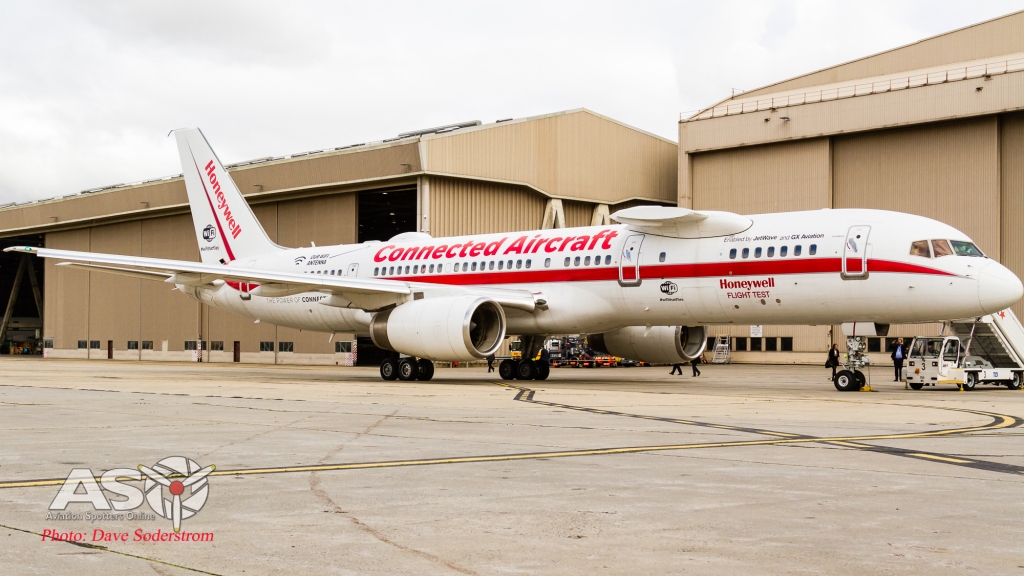
A prominent feature of the aircraft is the pylon on the starboard side of the aircraft. This is used to test engines under development.
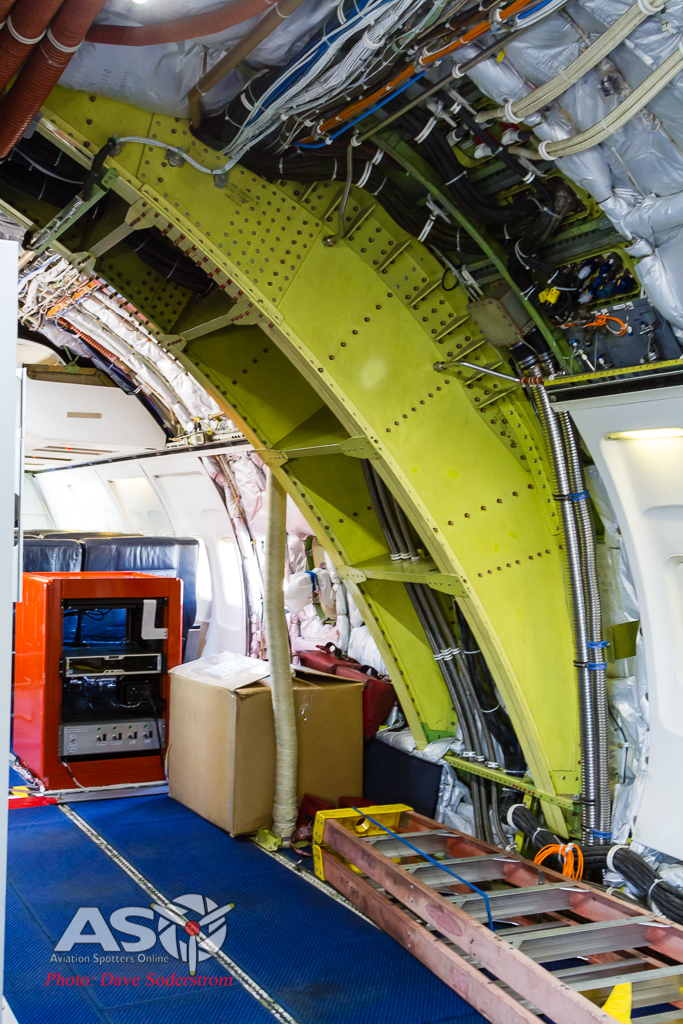
The modifications to support the test pylon means some substantial Modifications are done internally to not only support the weight of the engine, but also the hydraulic, fuel feed and sensor test probes.
ASO was given exclusive media access to this lovely 35 year old aircraft on the Melbourne leg of it’s world tour. The aircraft undertook an hour long mission out of Melbourne International Airport to highlight the Connected Aircraft to interested airline and aircraft officials.

No inflight service here, the cabin is set up for engineers to monitor the various systems installed during a mission test.
Honeywell representatives highlighted the way the test bed is changing how paying passengers communicate on board their flights, and how the systems lighten pilot work loads with real time data.
Connected Weather enables real time weather reporting with updates from as far as 300 miles ahead of the aircraft. This alone will help reduce fuel bills for airlines by a huge margin. Pilots will be able to optimise the vertical profile of the flight which also helps in reducing emissions.
Using Honeywell’s JetWave Satellite system enables passengers to have Wifi connectivity at speeds equivalent to those from home.
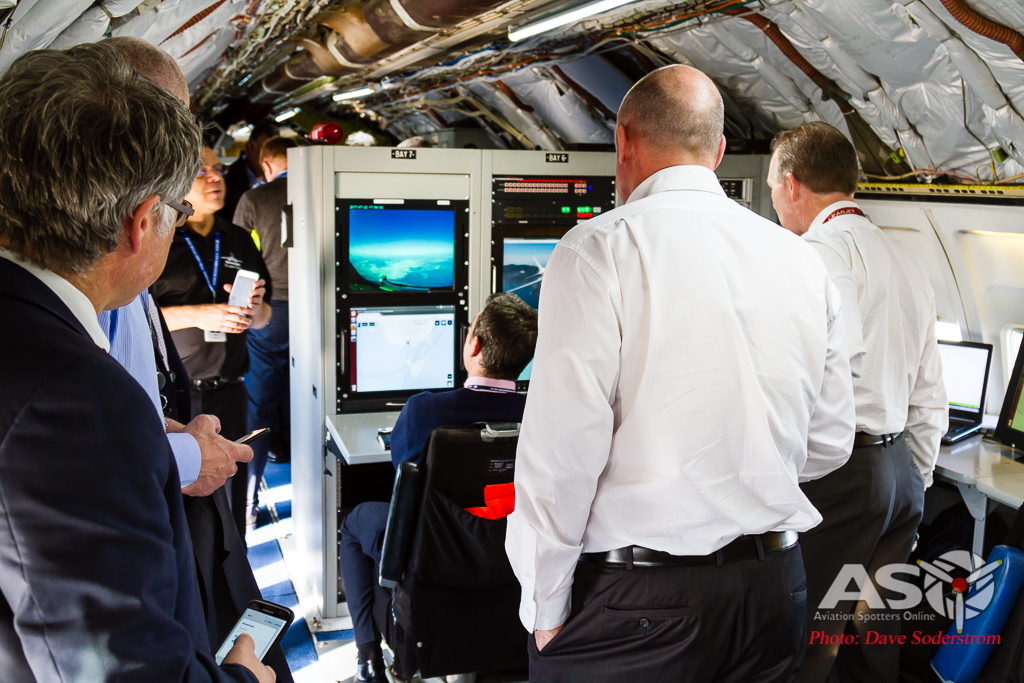
Prospective clients, spent time with the Honeywell engineers and representatives, to gain a better understanding of the potential of the systems usage during the flight which saw us track from Melbourne to Launceston and return.
While on board ASO was able to experience the high speed connectivity to the point where I broadcasted live on our Facebook page.
Interview with Rachel on board the Honeywell connected 757
Posted by Aviation Spotters Online on Sunday, 23 July 2017

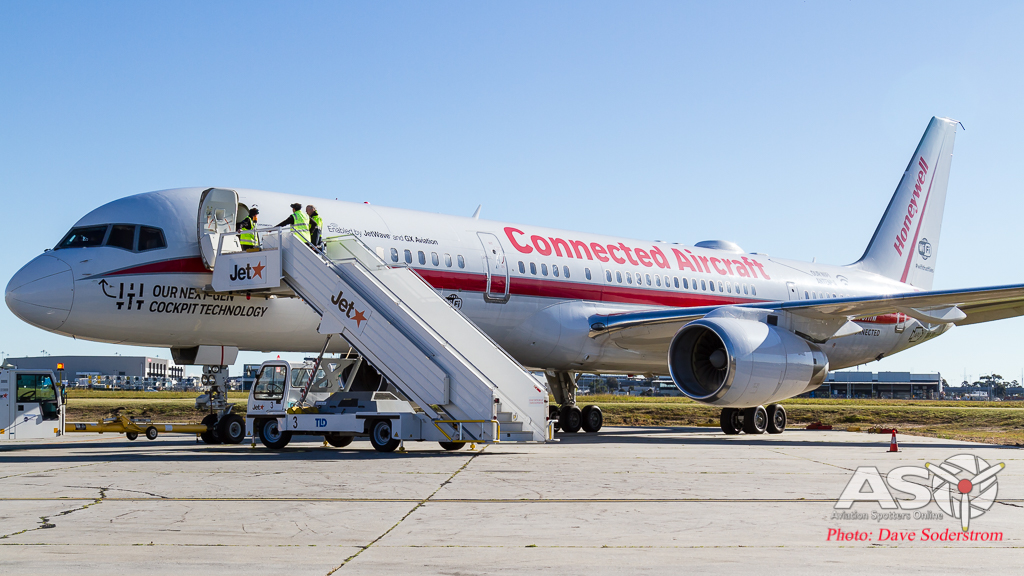


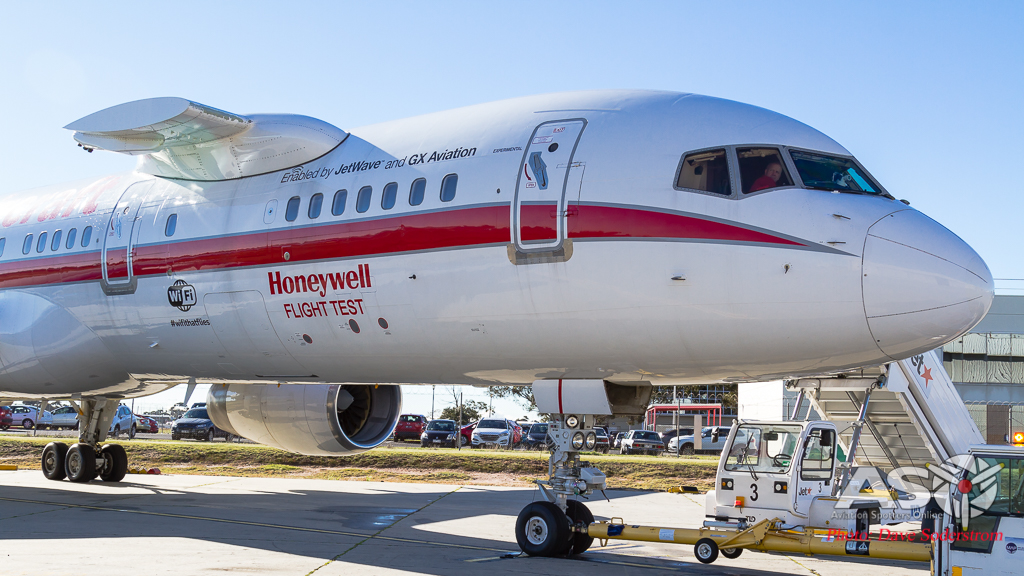
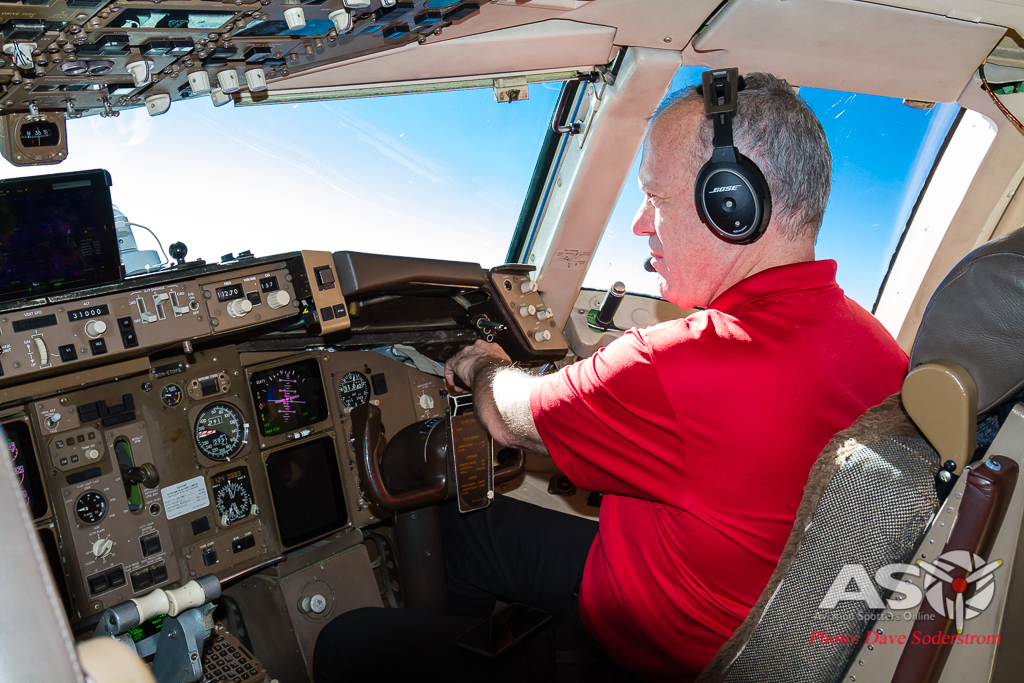
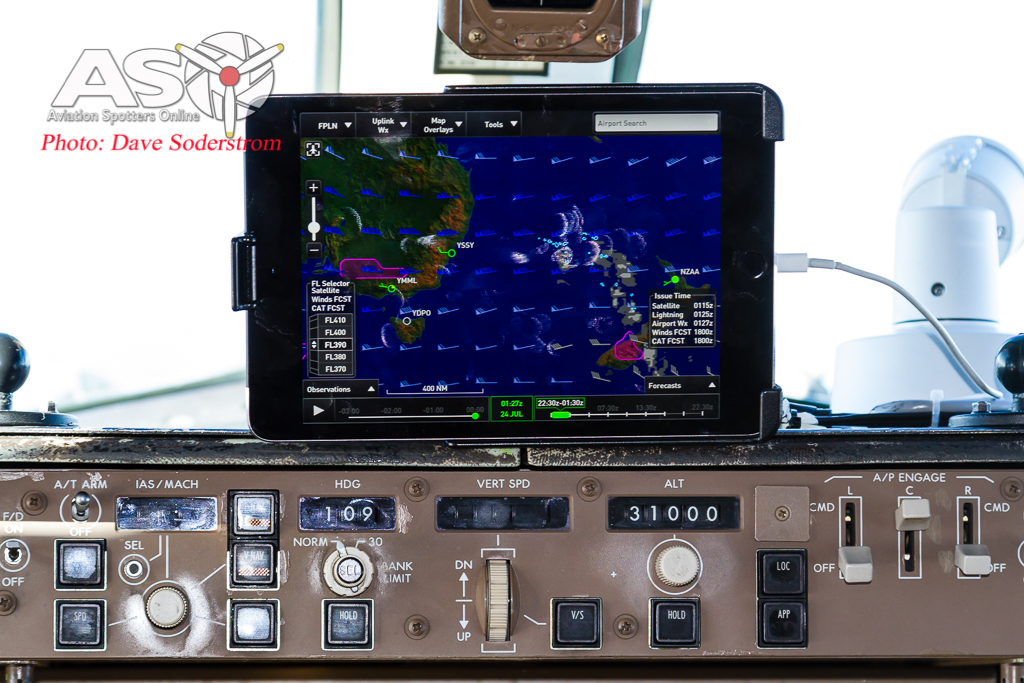
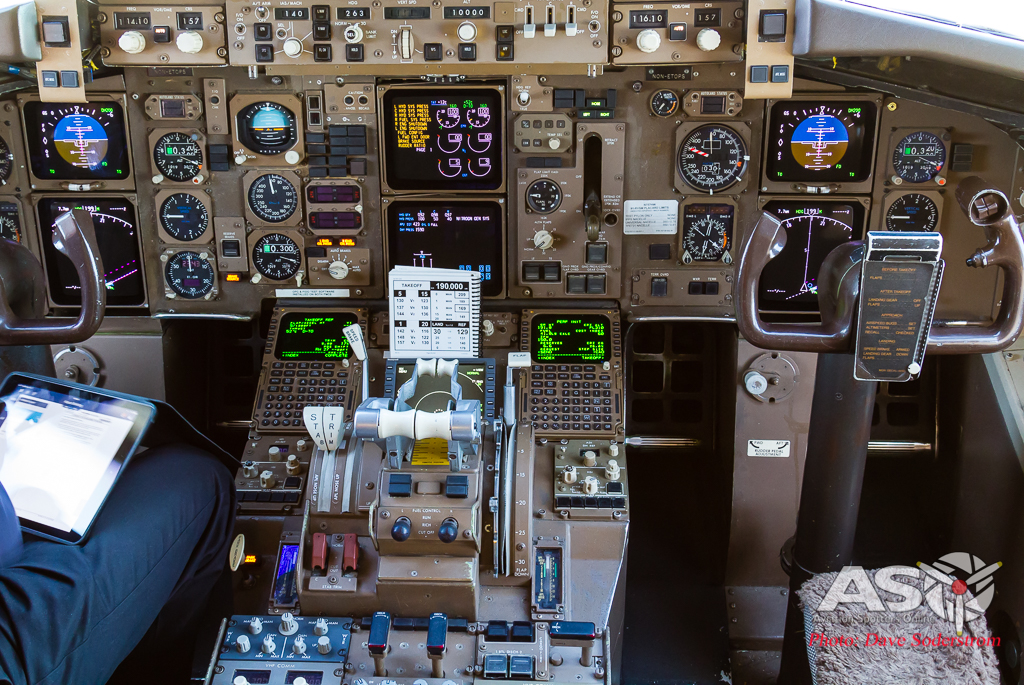
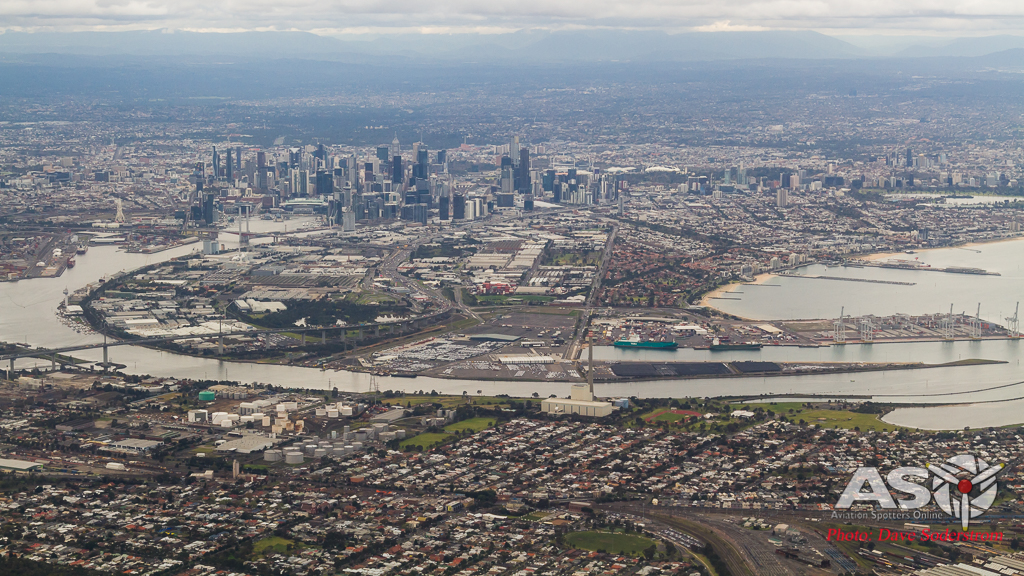
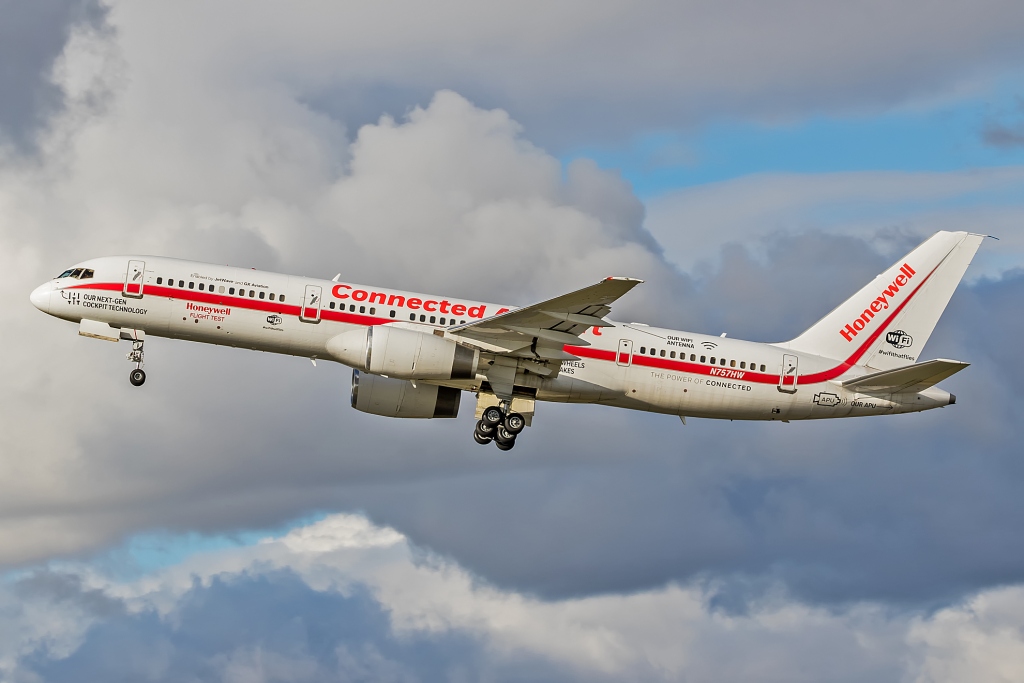



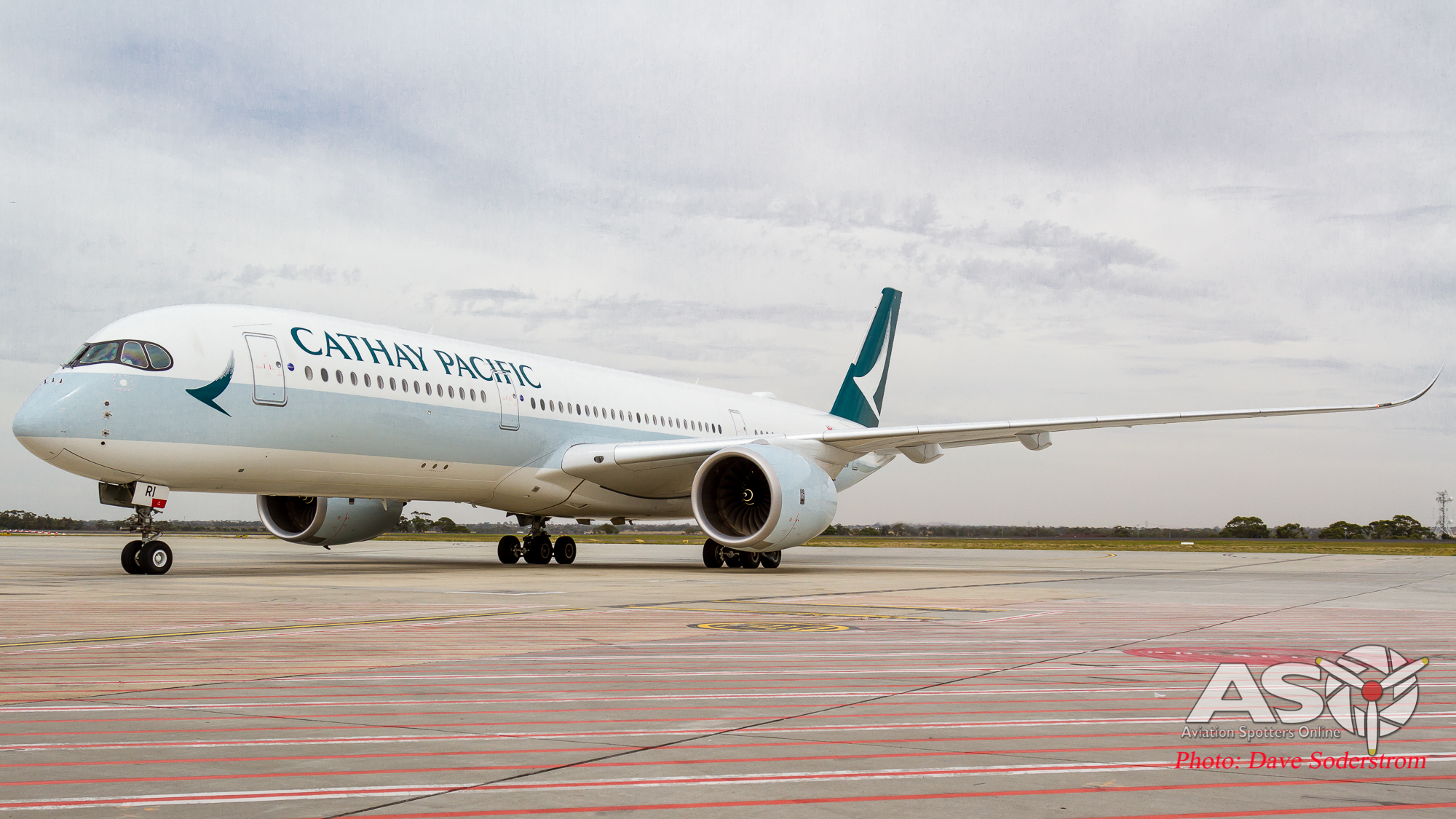





Nice article – lucky you!
Just FYI, the last shot of the 757 must have been taken on its departure to Canberra (from RWY 34), not during its missed approach to RWY27. The sun is on completely the wrong side. Actually, I’m not sure there was any sun at all during its missed approach, but I was in completely the wrong place anyway…